Best-in-class emitter materials for organic solid state lasers have been discovered by laboratories spread across the world that were coordinated by an artificial intelligence. The researchers believe the technique could provide a blueprint for running experiments in parallel and thereby accelerating the discovery of other materials.
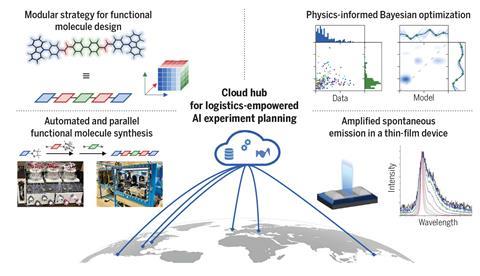
In recent years, the development of robotics and artificial intelligence has led to increasing interest in ‘self-driving labs’, with the design, synthesis, testing and analysis of molecules carried out automatically and used to select subsequent molecules for synthesis and analysis. In principle, this could be much more efficient if multiple labs pooled their analytical resources to work on the same problem – especially as different labs have different specialist equipment – but integrating the work of labs in real time is extremely challenging.
In the new work, researchers at the University of Toronto in Canada developed an artificial intelligence algorithm that could process data from laboratories as widespread as the University of Illinois Urbana–Champaign, US, University of Glasgow, UK, and Kyushu University in Japan. It coordinated a systematic search of more than 150,000 possible organic solid state materials produced by iterative Suzuki–Miyaura couplings to find the one with the lowest lasing threshold.
The algorithm constantly received results from laboratories around the world and used each new data point to update a list of the most promising molecules to synthesise and analyse next. This allowed laboratories to avoid duplicating one another’s results. ‘If we had multiple labs that had similar capabilities and could do the same experiments … then whenever a lab was free you could acquire that experiment and run it in the lab… The AI would then update the list and say “OK, now these are the most informative ones”,’ says joint first author Felix Strieth-Kalthoff at the University of Toronto. ‘The sun never set on this project: it was just going on around the globe,’ adds Martin Burke of the University of Illinois Urbana–Champaign.
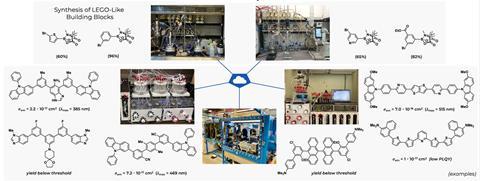
Moreover, it allowed parts of molecules to be prepared in one laboratory before being shipped to another for further synthesis and analysis. ‘If you buy a car in America, the chances are very high that it’s been made very heavily in Mexico and in Canada with parts going back and forth across the border several times,’ says Alán Aspuru-Guzik at the University of Toronto. This kind of delocalised production line chemistry has previously been almost impossible.
At the end of the project, the researchers arrived at 21 molecules with better stimulated emission than the previous state-of-the-art. ‘We’re at the dawn of the molecular industrial revolution because modularisation on the molecular scale is going to give us all the same advantages that drove the industrial revolution on the macroscale,’ says Burke. ‘This paper represents a very exciting example of what’s coming.’
Chemical engineer Milad Abolhasani of North Carolina State University, who was not part of the research, agrees. ‘Self-driving labs have been around for seven or eight years, but all prior self-driving labs have been confined within one lab,’ he says. ‘There are a lot of obstacles to address when you want to do these distributed, delocalised discovery campaigns and this paper is a great example of how to properly do that.’ He says the next steps are to expand the number of fully functional autonomous self-driving labs beyond the ‘handful’ currently in existence and to expand the range of reactions that can be automated. ‘Going beyond just liquid-phase organic synthesis and developing new tools that can handle more challenging reaction conditions is a must for the community,’ he says.
References
F Strieth-Kalthoff et al, Science, DOI: 10.1126/science.adk9227



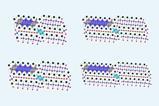
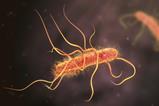
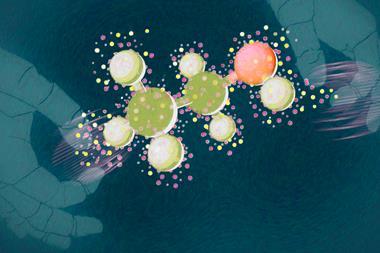

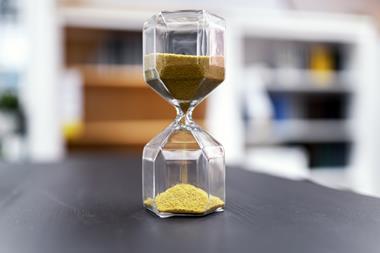
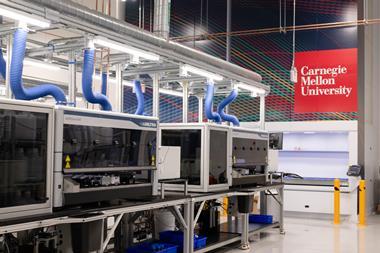

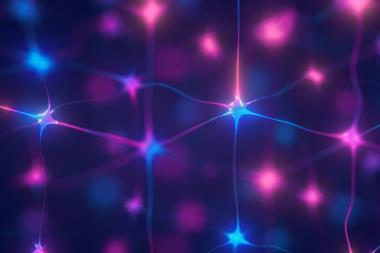






No comments yet